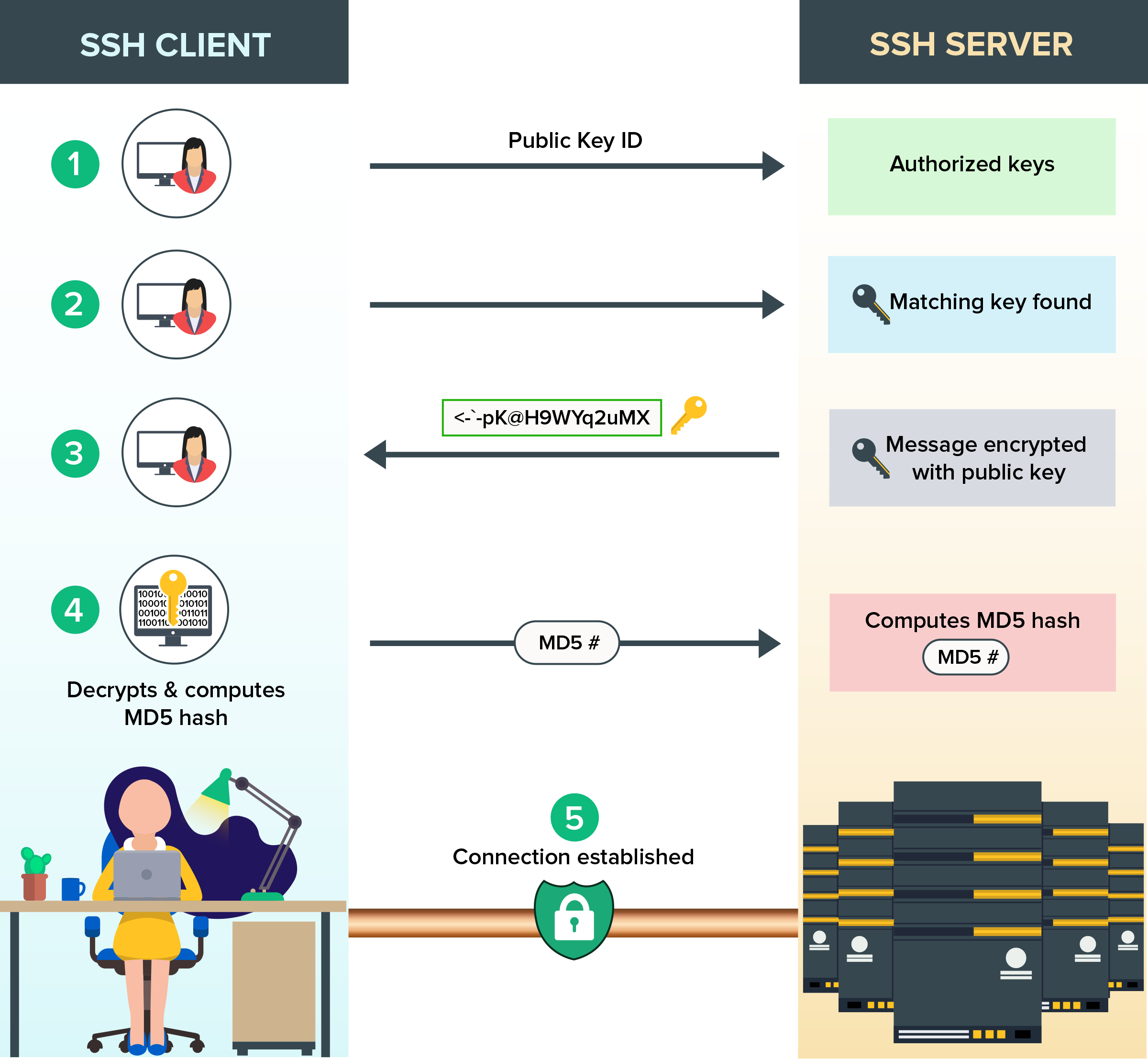RemoteIoT SSH key management is more than just a buzzword in today’s tech-driven world. It’s the backbone of secure communication for devices spread across vast networks. Think about it—every time you connect to a remote server or IoT device, you’re relying on SSH keys to ensure your data stays safe. But managing these keys can get messy if you don’t have the right strategies in place. This guide will walk you through everything you need to know about remoteIoT SSH key management.
In this digital age, cybersecurity threats are lurking around every corner. From hackers trying to infiltrate your network to malicious insiders looking for vulnerabilities, the risks are real. That’s why mastering SSH key management is crucial. It’s not just about setting up keys and forgetting them; it’s about maintaining a secure and efficient system that keeps your data safe while allowing seamless access for authorized users.
We’ll dive deep into the world of SSH key management, exploring best practices, tools, and strategies that will help you keep your remoteIoT infrastructure secure. Whether you’re a beginner trying to wrap your head around SSH keys or an experienced admin looking to refine your processes, this article has got you covered.
Read also:Vivian Falcone The Boss The Untold Story Of Power Passion And Influence
Here’s a quick overview of what we’ll cover:
- Understanding SSH keys and their importance
- Best practices for managing SSH keys in remoteIoT environments
- Tools and technologies to simplify SSH key management
- Common pitfalls to avoid when handling SSH keys
- Future trends in SSH key management
What Exactly is RemoteIoT SSH Key Management?
RemoteIoT SSH key management refers to the process of securely generating, distributing, and maintaining SSH keys within an IoT network. SSH (Secure Shell) keys are cryptographic keys used to authenticate users and devices, ensuring secure communication over untrusted networks. In simple terms, they’re like digital passwords that grant access to remote systems.
But here’s the catch: managing SSH keys isn’t as straightforward as it sounds. As your IoT network grows, so does the number of keys you need to manage. Without a proper system in place, things can quickly spiral out of control. That’s why having a solid SSH key management strategy is essential for maintaining security and efficiency.
Why SSH Keys Matter in RemoteIoT Environments
SSH keys play a critical role in securing remoteIoT environments. Unlike traditional passwords, which can be easily guessed or stolen, SSH keys provide a much stronger layer of authentication. Here are a few reasons why SSH keys are so important:
- Enhanced Security: SSH keys use complex algorithms that make them nearly impossible to crack.
- Efficient Access Control: With SSH keys, you can grant or revoke access to specific users or devices with ease.
- Automation Friendly: SSH keys are perfect for automating tasks in remoteIoT environments, ensuring smooth operations without human intervention.
The Importance of Secure SSH Key Management
When it comes to remoteIoT SSH key management, security should always be your top priority. A single compromised key can open the door to a world of trouble, allowing unauthorized access to your entire network. That’s why it’s crucial to implement robust security measures to protect your SSH keys.
But how do you ensure your SSH keys are secure? The answer lies in a combination of best practices and cutting-edge technologies. From encrypting your keys to regularly rotating them, there are several steps you can take to minimize risks. We’ll explore these strategies in more detail later in this article.
Read also:Robert Low The Mastermind Behind The Scenes You Need To Know
Common Security Threats to SSH Keys
Before we dive into the solutions, let’s take a look at some of the common security threats that can compromise your SSH keys:
- Key Theft: Hackers can steal your SSH keys if they gain access to your system or device.
- Weak Keys: Using weak or outdated algorithms can make your keys vulnerable to attacks.
- Improper Storage: Storing your SSH keys in insecure locations can expose them to unauthorized access.
Best Practices for RemoteIoT SSH Key Management
Now that we’ve established the importance of SSH key management, let’s talk about the best practices you should follow. These strategies will help you create a secure and efficient system for managing SSH keys in your remoteIoT environment.
1. Generate Strong SSH Keys
The first step in secure SSH key management is generating strong keys. Use modern algorithms like Ed25519 or RSA with a key size of at least 2048 bits. This ensures your keys are resistant to brute-force attacks and other forms of compromise.
2. Use Passphrases
Adding a passphrase to your SSH keys adds an extra layer of security. Even if someone manages to steal your key, they’ll still need the passphrase to use it. Think of it as a digital lock that keeps your keys safe.
3. Limit Key Access
Not everyone needs access to your SSH keys. Restrict access to only those who absolutely need it. This minimizes the risk of unauthorized access and makes it easier to track who has access to what.
4. Regularly Rotate Keys
Just like passwords, SSH keys should be rotated regularly. This ensures that even if a key is compromised, the damage is limited. Set up a schedule for key rotation and stick to it.
Tools for Simplifying SSH Key Management
Managing SSH keys manually can be a tedious and error-prone process. That’s where specialized tools come in. These tools automate many of the tasks involved in SSH key management, making your life easier and your system more secure.
1. HashiCorp Vault
HashiCorp Vault is a popular tool for managing secrets, including SSH keys. It provides secure storage, automated key rotation, and fine-grained access control, making it a great choice for remoteIoT environments.
2. SSH Key Management Systems (SKMS)
SKMS platforms are designed specifically for managing SSH keys. They offer features like key discovery, inventory management, and automated key rotation, ensuring your keys are always up to date and secure.
3. OpenSSH
OpenSSH is a widely used open-source tool for secure communication. It includes features for managing SSH keys, making it a reliable option for remoteIoT SSH key management.
Common Pitfalls to Avoid in SSH Key Management
Even with the best tools and strategies, mistakes can happen. Here are some common pitfalls to avoid when managing SSH keys in remoteIoT environments:
- Using Default Keys: Never use default keys provided by manufacturers or third-party services. Always generate your own keys.
- Ignoring Key Rotation: Failing to rotate keys regularly can leave your system vulnerable to attacks.
- Storing Keys in Plain Text: Always encrypt your SSH keys to protect them from unauthorized access.
Future Trends in RemoteIoT SSH Key Management
The world of remoteIoT SSH key management is constantly evolving. New technologies and trends are emerging that promise to make the process easier and more secure. Here are a few trends to watch out for:
1. Quantum-Resistant Algorithms
As quantum computing becomes more prevalent, traditional cryptographic algorithms may become obsolete. Quantum-resistant algorithms are being developed to ensure SSH keys remain secure in the future.
2. AI-Driven Automation
Artificial intelligence is being used to automate many aspects of SSH key management, from key generation to access control. This reduces the burden on administrators and minimizes human error.
3. Blockchain Technology
Blockchain is being explored as a potential solution for secure SSH key management. Its decentralized nature makes it ideal for storing and managing keys in a tamper-proof manner.
Conclusion: Take Control of Your RemoteIoT SSH Key Management
RemoteIoT SSH key management is a critical component of any secure network. By following best practices, leveraging the right tools, and staying aware of emerging trends, you can ensure your SSH keys remain secure and your system runs smoothly.
So, what’s next? Take action! Start implementing the strategies we’ve discussed and explore the tools that can simplify your SSH key management process. And don’t forget to share your thoughts in the comments below. Are there any specific challenges you face with SSH key management? Let’s start a conversation and help each other out.
Remember, cybersecurity is a team effort. Together, we can build a safer and more secure digital world. Stay safe, stay secure, and happy managing those SSH keys!



